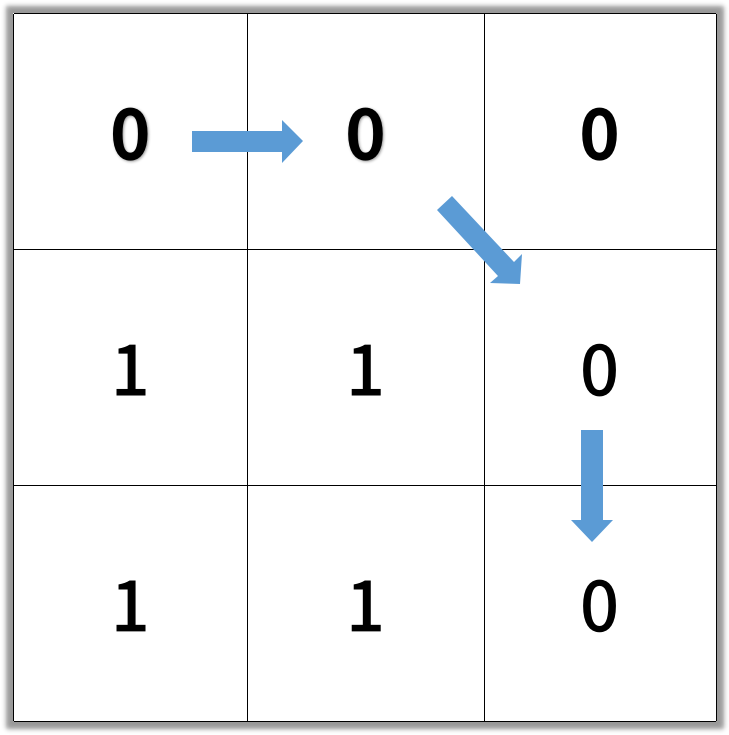[LeetCode February Challange] Day 13 - Shortest Path in Binary Matrix
In an N by N square grid, each cell is either empty (0) or blocked (1).
A clear path from top-left to bottom-right has length k if and only if it is composed of cells C_1, C_2, ..., C_k such that:
- Adjacent cells C_i and C_{i+1} are connected 8-directionally (ie., they are different and share an edge or corner)
- C_1 is at location (0, 0) (ie. has value grid[0][0])
- C_k is at location (N-1, N-1) (ie. has value grid[N-1][N-1])
- If C_i is located at (r, c), then grid[r][c] is empty (ie. grid[r][c] == 0).
Return the length of the shortest such clear path from top-left to bottom-right. If such a path does not exist, return -1.
Example 1:


Input: [[0,1],[1,0]]
Output: 2
Example 2:


Input: [[0,0,0],[1,1,0],[1,1,0]]
Output: 4
Note:
- 1 <= grid.length == grid[0].length <= 100
- grid[r][c] is 0 or 1
Solution
BFS
Time complexity : O(rc)
Space complexity : O(1)
class Solution {
public:
int shortestPathBinaryMatrix(vector<vector<int>>& grid) {
const int rows = grid.size(), cols = grid[0].size();
if (grid[0][0] != 0 || grid[rows-1][cols-1] != 0) return -1;
vector<pair<int, int>> q;
q.push_back({0, 0});
int step = 0;
while (!q.empty() && grid[rows-1][cols-1] <= 0) {
++step;
// mark
for (auto xy: q) {
grid[xy.second][xy.first] = step;
}
// get next breadth
vector<pair<int, int>> next_q;
for (auto xy: q) {
for (int dx = -1; dx <= 1; ++dx) {
for (int dy = -1; dy <= 1; ++dy) {
int x = xy.first+dx, y = xy.second+dy;
if (x<0 || cols<=x || y<0 || rows<=y)
continue;
if (grid[y][x] == 0) {
next_q.push_back({x, y});
grid[y][x] = -1;
}
}
}
}
q = next_q;
}
return grid[rows-1][cols-1] == 0 ? -1 : grid[rows-1][cols-1];
}
};
用 BFS 的方式,從左上走到右下。
每走一步 step 就加 1,並在腳下那塊記錄目前的 step。
再根據目前這一步走了哪些塊,尋找下一步要往哪走,往 0 的方向走,並標記 -1 ,代表該塊已記錄到下一步中。